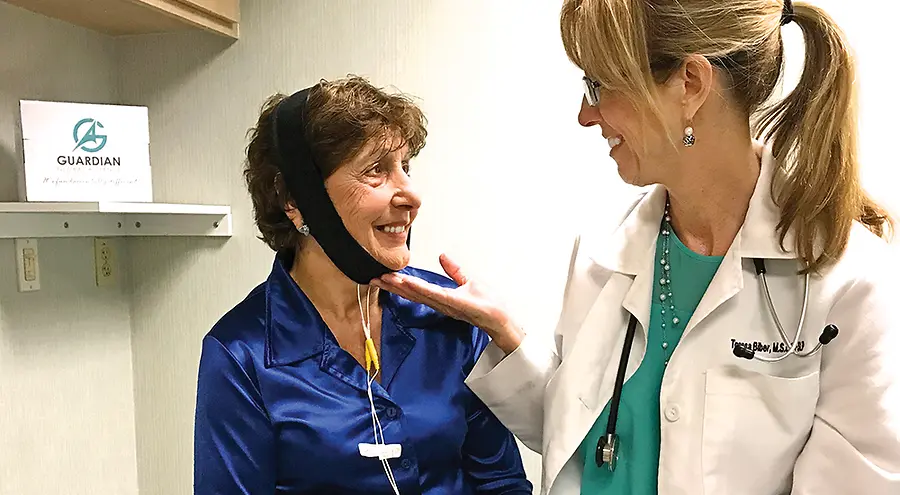Dysphagia: The Hidden Public Health Challenge—and How Specialized Intervention Is Changing Outcomes
Recognize and Treat Dysphagia Early to Transform Patient Outcomes and Healthcare Economics

In business, success hinges on recognizing risks early and acting decisively. Yet in healthcare, one of the most widespread—and dangerous—risks remains largely unrecognized: dysphagia, or difficulty swallowing.
Though eating and drinking appear simple, swallowing is an intricate neuromuscular process. It involves more than 36 muscles, six cranial nerves, and a seamless integration of voluntary and reflexive actions. When this system malfunctions, the consequences can be immediate—and severe.
A Common Yet Overlooked Condition
Dysphagia is not a disease itself but a disorder, often signaling an underlying medical condition. It is remarkably widespread: up to 23% of people worldwide experience dysphagia.
It can result from stroke, cancer treatments, cerebral palsy, surgeries involving the head or neck, acid reflux, dementia, neurodegenerative illnesses such as Parkinson’s and ALS, and many other conditions. Dysphagia can affect anyone—from premature infants struggling to feed to older adults experiencing age-related decline. No one is immune, but there is hope.
Why Dysphagia Is a Business Problem—Not Just a Clinical One
Untreated dysphagia carries serious clinical risks:
- Aspiration and choking
- Malnutrition and dehydration
- Aspiration pneumonia—the #1 cause of death in patients with neurological dysphagia and one of the top five causes of death in the U.S.
The economic implications are equally alarming. Aspiration pneumonia costs the U.S. over $3 billion annually, and feeding tubes—often resulting from unmanaged dysphagia—add another $370 million per year.
Hospitals and healthcare organizations also bear the burden:
- Increased length of stay (4.04 days vs. 2.40 days)
- Higher mortality rates
- More frequent readmissions
- Lower patient satisfaction and quality ratings
For hospitals, long-term care facilities, home health agencies, and insurers, dysphagia represents a predictable financial strain—one that can be dramatically reduced through early detection and effective intervention.
The Human Cost Behind the Numbers
Eating is deeply tied to family, culture, independence, and pleasure. When swallowing becomes unsafe, individuals often withdraw socially, lose weight, and experience declining physical and emotional health. Silent aspiration—when food or liquids enter the lungs without triggering a cough—remains the greatest danger and can lead to sudden medical decline.
The Biber Protocol®: Putting the Care Back in HealthCare
The Biber Protocol® is an evidence-based approach that offers hope and measurable results. Developed in 1999 by internationally recognized speech-language pathologist Teresa Biber LoMonte, it uses painless neuromuscular electrical stimulation (NMES) to retrain the muscles responsible for safe swallowing, vocal production, and facial movement.
“The purpose of dysphagia rehabilitation is to restore swallow function to the highest level possible in order to prevent further complications and promote optimal quality of life.” — Biber, 2008
The Biber Protocol® is the original NMES dysphagia treatment method—often imitated but never duplicated. Its impact is global:
- Clinicians worldwide are trained in the method
- Integrated by hospitals, rehabilitation centers, home health agencies, and private practitioners
- Over 1 million treatments administered
- Consistently excellent outcomes reported
- Zero known adverse effects
This is not just therapy—it is a strategic solution with both clinical and financial benefits.
How My Services Support Healthcare Teams
By implementing The Biber Protocol® and advanced dysphagia training, I help healthcare providers:
- Identify dysphagia earlier and more accurately
- Reduce aspiration risk and hospital readmissions
- Shorten length of stay
- Improve patient outcomes and quality measures
- Enhance staff competency and confidence
- Lower overall care costs
- Restore patient dignity, independence, and quality of life
For healthcare leaders, this translates into streamlined operations, improved patient satisfaction, and reduced financial strain.
If you’re interested in learning more about The Biber Protocol®, visit thebiberprotocol.com or email me at Teresa@thebiberprotocol.com.
Putting the care back in healthcare.


